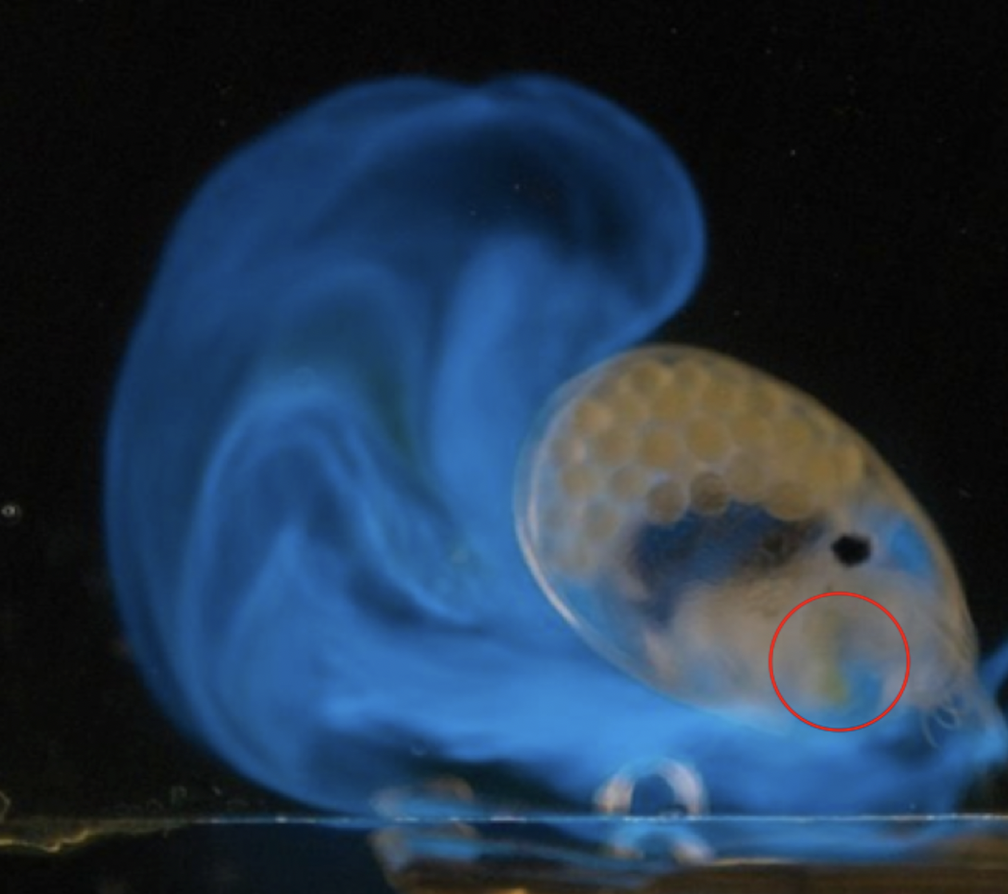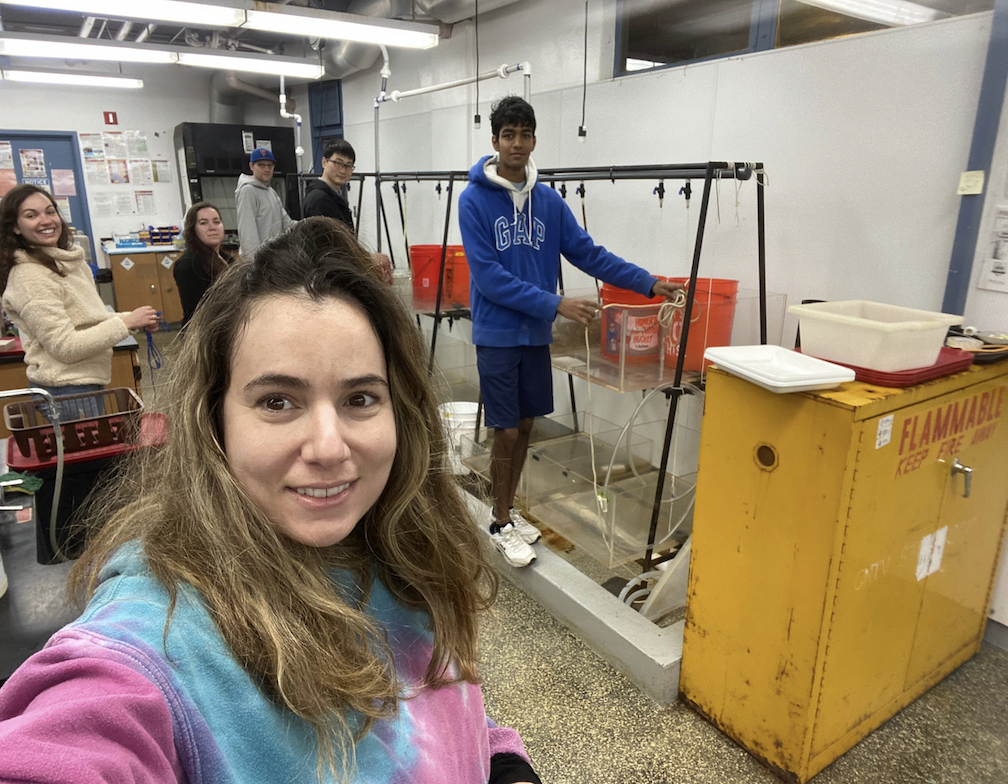By: Lisa Yeter Mesrop
Hi! My name is Lisa Yeter Mesrop and I’m a first-year graduate student in Dr. Todd Oakley’s lab at the University of California, Santa Barbara. I study these fascinating bioluminescent crustaceans called ostracods (‘sea fireflies’). Sea fireflies emit light-producing compounds from a light organ located within a soft muscular gland near the mouth of the animal and is also known as the ‘upper lip’. The light reaction involves a substrate, luciferin, and a luminesce enzyme, luciferase, each of which is synthesized in separate gland cells and discharged in a mucus-like substance. The substrate, enzyme and mucus combine extracellularly to produce beautiful blue explosions underwater. Sea fireflies use bioluminescence for defense and species-specific courtship, where males spit packets of glowing mucus at night in patterns that evolved to attract females.

A bioluminescent ostracod, Vargula tsujii, spitting out packets of glowing mucus. The ‘upper lip’ organ is highlighted by the red circle.
In this video, a cardinal fish Phaeoptyx pigmentaria (far left) attempts to bite a luminous ostracod but then spits it out (ostracod species unknown).The fish attempts to bite the ostracod, but the ostracod secretes large amounts of ‘glowing mucus’ and makes it’s great escape by swimming away and leaving a trail of bioluminescent light. Image taken by Trevor J. Rivers and Niko Hensley in Jamaica.
I propose to use bioluminescent ostracods (‘sea fireflies’) collected from Catalina Island to understand how new cells originate and give rise to complex organs. The bioluminescent ostracod, Vargula tsujii, is the only bioluminescent species found in the Pacific Coast of North America and the Wrigley Pier is known to consistently have high populations of Vargula tsujii. The close proximity to the Wrigley Pier will facilitate convenient access to copious numbers of bioluminescent and non-bioluminescent ostracods allowing me to develop RNA-sequencing methods to understand how novel specialized cells originate and give rise to new, organ-level behaviors in animal evolution.
A little about me: I graduated from the University of California, San Diego with a B.S. in Environmental Biology. My interest in marine science began as an undergraduate researcher in Dr. Amro Hamdoun’s Cell and Developmental Biology Lab at Scripps Institute of Oceanography. I had the opportunity to develop my own research project where I characterized the function of solute carrier proteins during early sea urchin development to provide insight into gene regulatory processes during embryogenesis. Following graduation, I worked as a research technician in Dr. David Caron’s Protistan Aquatic Lab at the University of Southern California. I was intimately involved in projects spanning from single-cell gene expression to whole community analysis. I joined Dr. Todd Oakley’s Evolution Lab in the summer of 2019 where I study the evolution of biological novelties.
I’ve recently visited the Wrigley Institute with my lab last summer to collect bioluminescent ostracods. Typically, we set traps off the Wrigley pier after sunset and retrieve traps a few hours after deployment. Here is a photo of myself (tie-dye sweatshirt) and the Oakley Lab at the Wrigley Institute preparing to filter the bioluminescent ostracods collected in traps.
I’m super excited to get back on the island this summer and collect more bioluminescent ostracods for my graduate work. Due to the COVID-19 pandemic, my wet-lab work came to a halt but that did not stop me from continuing with my research! For the time being, I decided to come up with a project that was entirely computational and relied on existing data to complement my current research.

